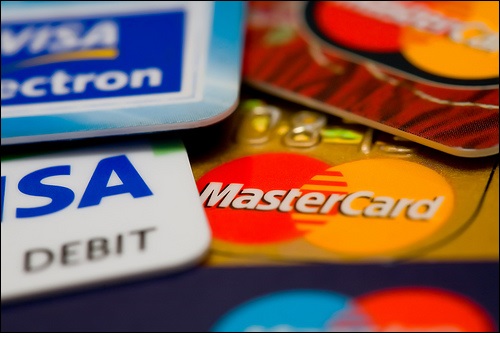
|
|

|
|
| April 25, 2024 |
|
Google now knows when its users go to the store and buy stuff 
SAN FRANCISCO--Google has begun using billions of credit card transaction records to prove that its online ads are prompting people to make purchases, even when they happen offline in brick-and-mortar stores, the company said Tuesday.
The advance allows Google to determine how many sales have been generated by digital ad campaigns, a goal that industry insiders have long described as “the holy grail” of online advertising. But the announcement also renewed long-standing privacy complaints about how the company uses personal information. To power its multi-billion dollar advertising juggernaut, Google already analyzes users’ web browsing, search history and geographic locations, using data from popular Google-owned apps like YouTube, Gmail, Google Maps and the Google Play store. All that information is tied to the real identities of users when they log into Google’s services. The new credit card data enables the tech giant to connect these digital trails to real-world purchase records in a far more extensive way than was possible before. But in doing so, Google is yet again treading in territory that consumers may consider too intimate and potentially sensitive. Privacy advocates said few people understand that their purchases are being analyzed in this way and could feel uneasy, despite assurances from Google that it has taken steps to protect the personal information of its users. And though the company said it took pains to protect user privacy, it declined to detail how the new system works or what companies are analyzing credit and debit card records on Google’s behalf. Google, which saw $79 billion in revenues last year, said it would not handle the records directly but that its undisclosed partner companies had access to 70 percent of credit and debit card transactions in the United States. The announcement comes as Google attempts to weather an outcry from advertisers over how their ad dollars are spent. Google is working to move past an advertising boycott of YouTube, its lucrative video site, after news reports that ads for mainstream brands were appearing alongside extremist content, including sites featuring hate speech and violence. Google for years has been mining location data from Google Maps in an effort to prove that knowledge of people’s physical locations could “close the loop” between physical and digital worlds. Users can block this by adjusting the settings on smartphones, but few do so, say privacy experts. This location tracking ability has allowed Google to send reports to retailers telling them, for example, whether people who saw an ad for a lawn mower later visited or passed by a Home Depot. The location-tracking program has grown since it was first launched with only a handful of retailers: Home Depot, Express, Nissan, and Sephora have participated. “Google, and also Facebook, believe that in order to get digital dollars from advertisers who are still primarily spending on TV, they need to prove that digital works,” said Amit Jain, chief executive of Bridg, a digital advertising startup that matches online to offline behavior. “These companies have to invest in finding the identity of the consumer at the moment when that shopper is at the cash register.” Tuesday’s announcement gives Google a clearer way to understand purchases than just location and allows them to understand purchase activity even when consumers deactivate location tracking on their smartphones. (Source: The Washington Post) Story Date: May 24, 2017
|